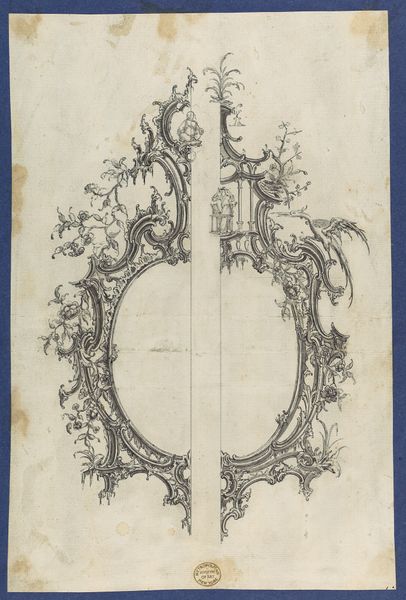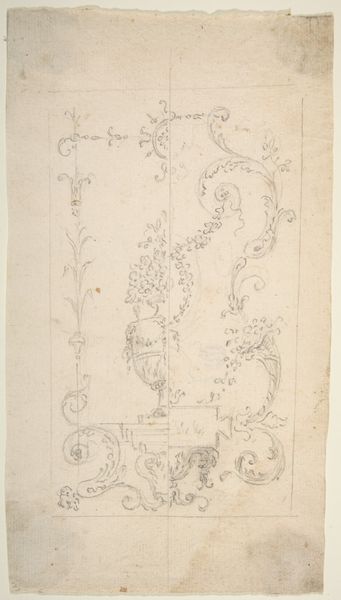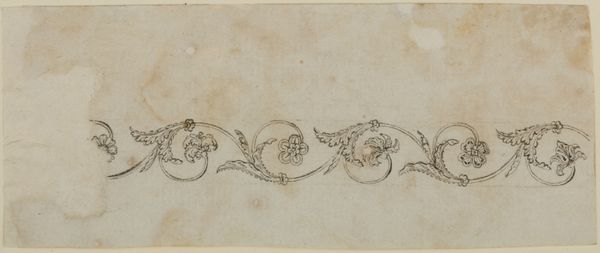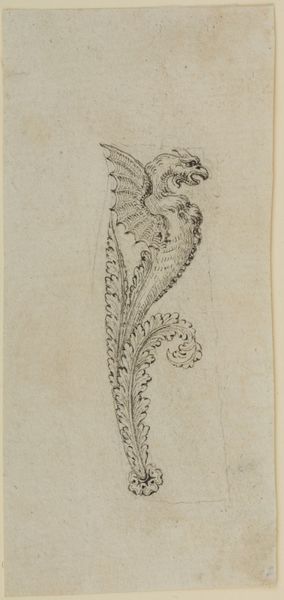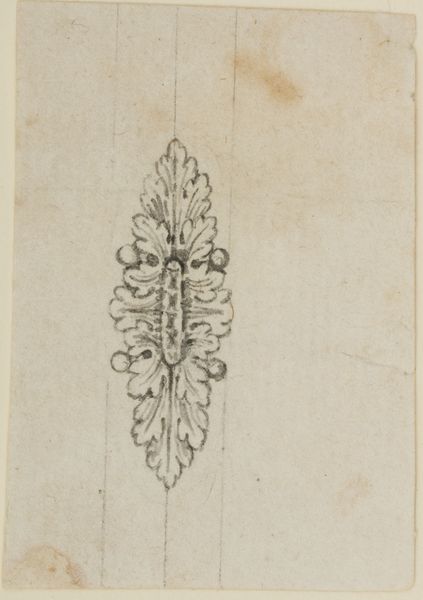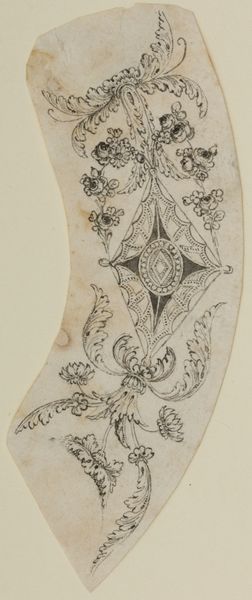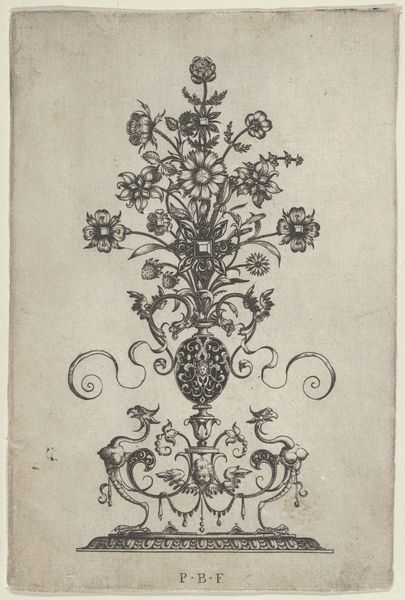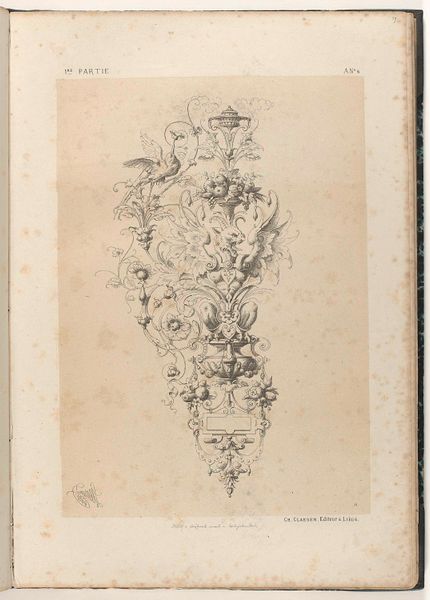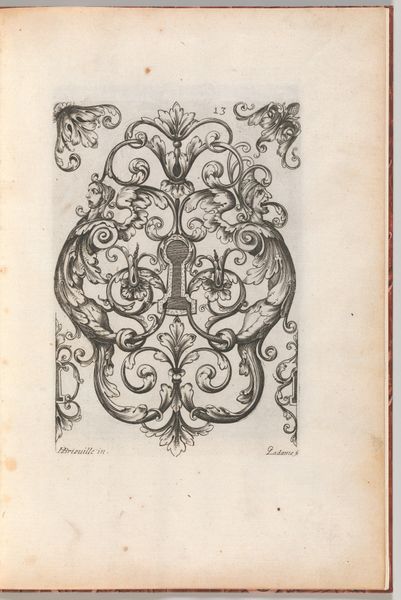
Pier Glass Frame, in Chippendale Drawings, Vol. I 1748 - 1758
0:00
0:00
drawing, print, pencil
#
drawing
# print
#
form
#
coloured pencil
#
geometric
#
pencil
#
line
#
academic-art
#
decorative-art
Dimensions: sheet: 8 1/2 x 4 13/16 in. (21.5 x 12.2 cm)
Copyright: Public Domain
Editor: We're looking at a drawing called "Pier Glass Frame, in Chippendale Drawings, Vol. I" by Thomas Chippendale, created between 1748 and 1758. It's a delicate pencil and print study for a mirror frame. It feels incomplete, somehow... what's your take on this, in terms of its historical context? Curator: Well, first it’s key to remember Chippendale's immense influence on 18th-century design. He wasn’t just a cabinet maker; he was a tastemaker. His "Gentleman and Cabinet-Maker's Director," where this drawing originates, functioned as a sort of catalog of designs available to other artisans, significantly shaping domestic interiors. Now, you mentioned it feeling incomplete. Why is that significant? Editor: Because it is a template or instruction manual almost and as such, maybe meant to be more practical. Curator: Precisely! And consider the audience. These weren’t fine art collectors but workshops reproducing fashionable designs. Chippendale democratized access to style, if you will, spreading evolving aesthetics beyond aristocratic circles, making high-end design motifs available to a wider public. He recognized that influence on society. Do you think its practical usage detracts from it as art, then? Editor: Hmm, that's a good question! It challenges the conventional view of art as purely aesthetic. This was made to serve, but that circulation in itself is powerful. So, you think that circulating these images really was a key to how Chippendale succeeded? Curator: Absolutely. He understood the market and strategically positioned himself as an arbiter of taste. What’s particularly interesting is how these design books affected regional variations, essentially standardizing fashionable design. Editor: I guess it wasn't just about making beautiful things, it was about shaping society's ideas about what beautiful things *should* be! Thanks. Curator: And remembering that design like this serves as a vital historical document too. Always great to rethink our assumptions!
Comments
No comments
Be the first to comment and join the conversation on the ultimate creative platform.
